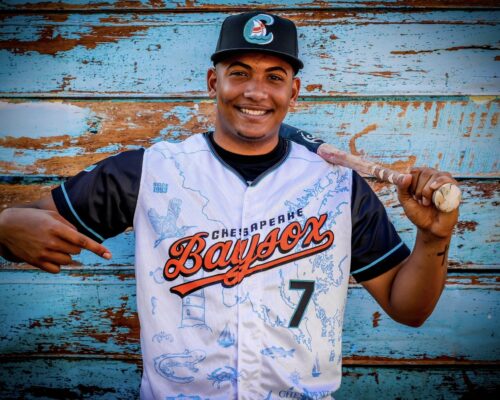The Chesapeake Bay has a new predator: the blue catfish. And the blue catfish has an unlikely new foe: photojournalist Jay Fleming. This frequent Chesapeake Bay Magazine contributor is on a mission to catch as many as he can, and is encouraging friends to do the same.
Introduced to Virginia tributaries as a new recreational fishery in the 1970s, the blue catfish today has massive negative economic and environmental implications on the Chesapeake Bay. They have adapted to tolerate the higher salinity that lies in the main stem of the Chesapeake. This adaptability is what makes them a real threat to the ecosystem. While many people recognize the issue, few have been successful at making a positive change in the invasive fishery.
Fleming tells us, “The problem with blue catfish is that they wreak havoc on the Chesapeake ecosystem. They are an unchecked predator so their population will grow exponentially, decimating native species in the process.”

After taking pictures of commercial catfisherman David “Cornflower” Confair out of Dorchester County, Fleming got the inspiration and gear to start a commercial endeavor of his own. Confair gave him a catfish trotline and some advice and Fleming was ready to go. He enlisted the help of Zack Hoisington, a lifelong angler. Hoisington, a USCG captain, runs light tackle fishing charters up and down the Bay.
The invasive blue cat will directly impact his charter business. “Every species I chase is impacted by these fish in some way,” Hoisington says. As an invasive top predator, they have negative implications on the environment and the economy.
In early April, Fleming and Hoisington teamed up to remove as many blue catfish as possible. They set a few personal goals to accomplish along the way. Fleming wanted to document their invasive nature by examining their stomach contents to determine what they were eating in the area. He also wanted to use his pictures to educate the public and get more people involved to eradicate the species. “By showing people the havoc these fish are causing in our local ecosystems, I hope to inspire people to get involved in the fishery,” he says.
Besides the environmental impact of fishing for blue catfish, Fleming admits that the fishing is highly enjoyable. “Blue cats can grow to be huge, so pulling 10 of them up on a line is awesome,” Hoisington says.

An Annapolis native, Fleming spent his youth exploring the creeks, shorelines, and fishing spots around the Bay. After graduating from St. Mary’s College of Maryland, he spent two summers removing invasive lake trout from Yellowstone Lake. During that time, he learned that documenting and sharing the process with the public broadens the impact of a project.

So far this catfish killing team has removed over 5,000 pounds of invasive blue catfish. They have taken local restaurateurs fishing to share the environmental issue and show them an alternative food option to overstressed species, such as striped bass. Fleming and Hoisington have partnered with local seafood markets and wholesalers to sell catfish to the public. Involving seafood retailers and restaurants not only removes the invasive species from the waterways but creates a demand for the fish and makes it available to the public.

Fleming and Hoisington have done their best to spread awareness and educate the public. “If we can get more people interested in fishing for blue catfish or show them that it is a tasty meal, hopefully, we can help get more of this invasive species out of the water.” Fleming and Hoisington want to get more anglers targeting this species during the closure of the striped bass fishery.
“The more blue catfish removed from the water the better,” Hoisingtion says. To spread awareness, they have brought along reps from local tackle shops to create social media content on how to catch blue catfish and have introduced their following to the issues of blue catfish in the Chesapeake.

The duo has involved younger generations in their mission. Spencer Gibbons-Neff and Daniel Gardiner are local high school students at The Severn School, where seniors are required to complete a cumulative project on something they are passionate about. Both Gibbons-Neff and Gardiner focused their senior projects on the positive impact of removing invasive species rather than the closure of the striped bass fishery.
While not everyone has the means to remove so many blue catfish from the Bay, Fleming and Hoisington are proof that everyone can help make a dent in the invasive species population. Whether it’s fishing on the Bay or ordering it at local restaurants, their advice is, “Get out there and make a difference, one blue catfish at a time.”




